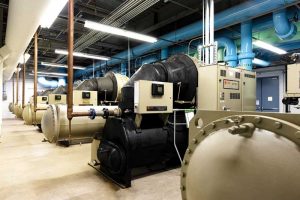
By Michael Daly, PE
As the world continues to grapple with the effects of climate change, reducing greenhouse gas (GHG) emissions has become a top priority for governments, businesses, and individuals alike. One sector that has a significant impact on global emissions is commercial buildings. In fact, according to the International Energy Agency (IEA), commercial buildings are the fourth-largest emitters of CO2 globally.
Within commercial buildings, HVAC systems are responsible for 67 percent of the total emissions emitted. This presents a major challenge for facility managers, who balance the day-to-day operational demands of their buildings with the need to reduce carbon footprints and energy costs. With HVAC systems playing such a crucial role in occupant comfort and energy consumption, decarbonizing these systems is key to achieving facility sustainability goals.
Fortunately, new advanced technologies are being introduced to the industry that can help facility managers optimize their HVAC systems, save money, reduce emissions, and even extend equipment life. This article will explore one of the most common issues with commercial HVAC systems and how facility managers can not only remedy it, but also improve overall HVAC system performance which ultimately contributes to savings and less carbon emissions being emitted from the building.
The refrigerant-oil relationship
Before discussing a solution for improving the sustainability of HVAC systems, a clear understanding of the basic refrigerant-oil relationship is essential.

Refrigerants and oil play a crucial role in the operation of almost every HVAC system, other than oilless magnetic bearing systems. Refrigerants are responsible for absorbing and releasing heat, while oil lubricates the system’s mechanical components to ensure smooth operation as well as dissipation of heat. Oil also works as a seal, minimizing compressed refrigerants from escaping from the compressor and ending up in the oil sump.




